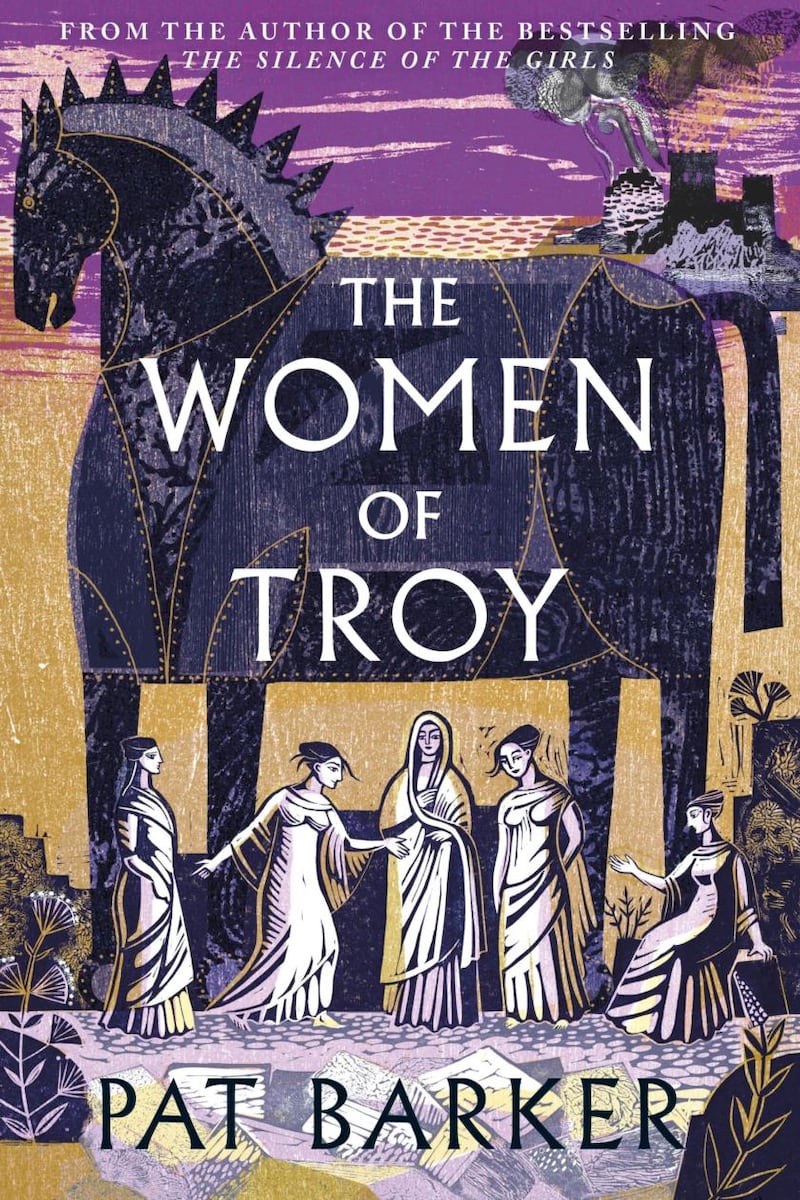With apologies to booksellers everywhere, there are advantages to reading Pat Barker’s new novel on an e-reader. A retelling of the aftermath of the fall of Troy from a feminist perspective, The Women of Troy has a populous cast largely made up of characters from Greek mythology. Reading on a Kindle means you can press a name and get a short synopsis of a character’s background and (undoubtedly messy) family tree. This proves helpful in the early chapters, in which we we meet numerous characters at once.
Barker doesn’t just have to get the balance right between source material and fiction: she is also working within the parameters of a sequel. The Women of Troy follows her prize-winning and bestselling novel The Silence of the Girls, which told the story of Briseis, the forgotten woman at the heart of one of the most famous of war epics, Homer’s Iliad.
In this second book, Briseis returns as narrator but is joined by two further perspectives, that of Pyrrhus, the immature and headstrong son of Achilles, and Calchas, a disgraced priest. The will to survive unites the three voices, whose narratives are skilfully woven into a compelling tale about the horrific consequences of war.

There is, as always, a great sense of immediacy to Barker’s worlds, irrespective of historical era. Starting her literary career in her 40s, the Yorkshire author has published 16 novels, including her WWI Regeneration trilogy, the final book of which won the Booker Prize. In The Women of Troy, the stakes are high from the beginning. A claustrophobic opening scene is set inside a certain wooden horse, as reluctant warrior Pyrrhus tries not to think about his bowel movements, focusing instead on the planned attack: “If this fails, every leading fighter in the Greek army will die in a single night.”
After the army successfully takes Troy, the rest of the book unfolds over a few months in the Greek encampment as the men wait for weather that will allow them to sail home: “Day after day, hour after hour, the freak wind blew, and so, here they all were, the victorious Greek fighters, penned in – and the captive Trojan women with them.”
Barker is not alone in her reimagining of classical myths and stories from the female perspective. Other recent examples include Madeline Miller’s Circe, Natalie Haynes’ A Thousand Ships and Maggie O’Farrell’s Women’s Prize-winning Hamnet. In the neat rendering of interiority and the stark eloquence of Barker’s prose, there are also echoes of Colm Tóibín’s The Testament of Mary, and, indeed, his stage adaptation with the actress Lisa Dwan, Pale Sister, a retelling of the Antigone myth from the perspective of the silenced sister Ismene.
As with that story, the burial of the dead is central to the plot of Barker’s book. Early in the narrative Pyrrhus kills the Trojan king, Priam, a visceral scene that haunts both reader and killer: “And now there’s no stopping the torrent of memory: the slippery feel of Priam’s hair, the shameful hacking away at the scrawny old neck, Priam’s stubbornness, his obdurate refusal to die.”
Afterwards, Pyrrhus refuses to let anyone bury the body, an inciting incident that brings a group of disparate women together when one of their kind chooses to disobey the order.
Occasionally there is too much exposition or explaining of past events, particularly in dialogue. But overall The Women of Troy is a deft and convincing retelling of a weary camp turning on itself, allegiances faltering and new alliances forming. The female solidarity storyline is kept in check. From clever Briseis to ageing Hecuba to a magnificently cantankerous Cassandra, the women help each other, though often in pragmatic deals that have one eye on self-preservation.
In such a perilous environment, Barker shows how women’s invisibility can be an advantage. Their constant objectification is also clear – prizes of honour, spoils of war, baby-making machines: “At times, it seemed more like a parasitic infestation than a pregnancy, taking me over, using me for its own purposes – which were their purposes. Kill all the men and boys, impregnate the women – and the Trojans cease to exist.”
Other, more positive legacies are also possible. Briseis treats Andromache with compassion because she remembers how she herself received kindness from Iphis. Elsewhere, a strange kind of healing occurs as the women swap prisoner-of-war horror stories. In each other, they find someone who listens, someone who understands.
In The Women of Troy, Barker reclaims their voices and their plights. The Kindle biographical note on Little Ajax, for example, describes “a Greek mythological hero, the leader of the Locrian contingent during the Trojan War”. In Barker’s retelling he is repeatedly referred to as the man who raped Cassandra in the temple of Athena. Years from now, readers will surely remember the novel not the note.











